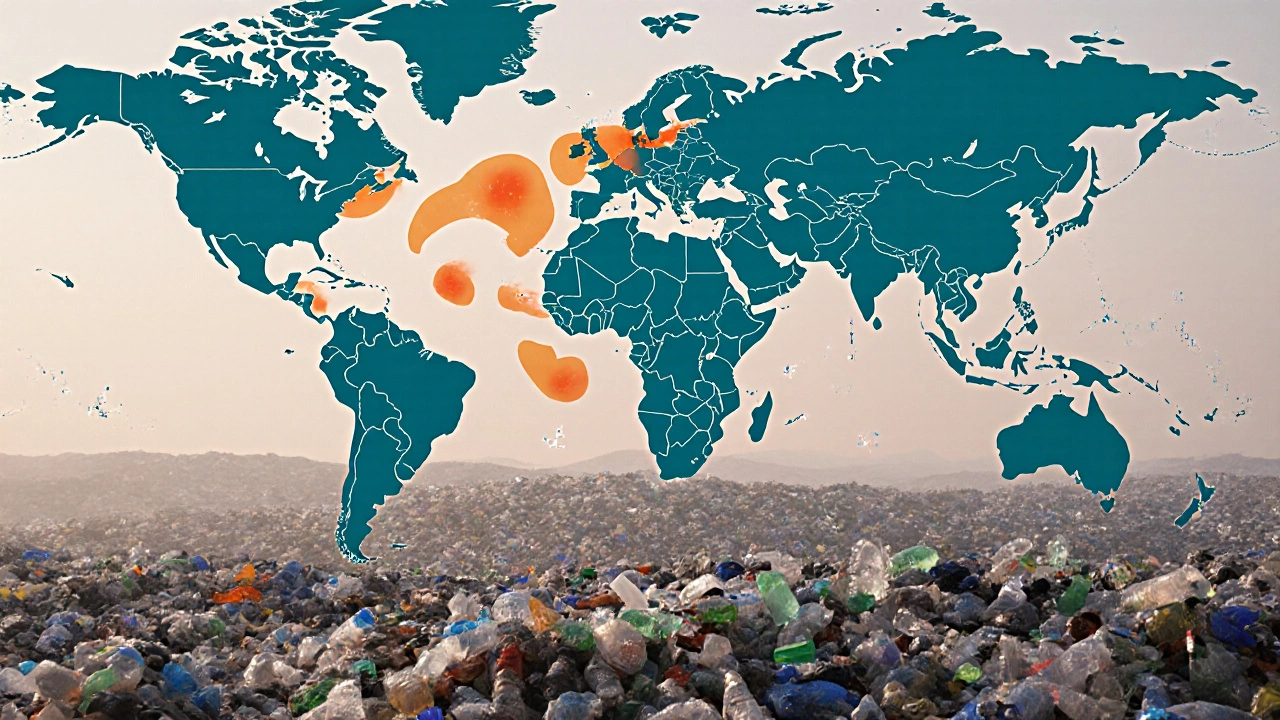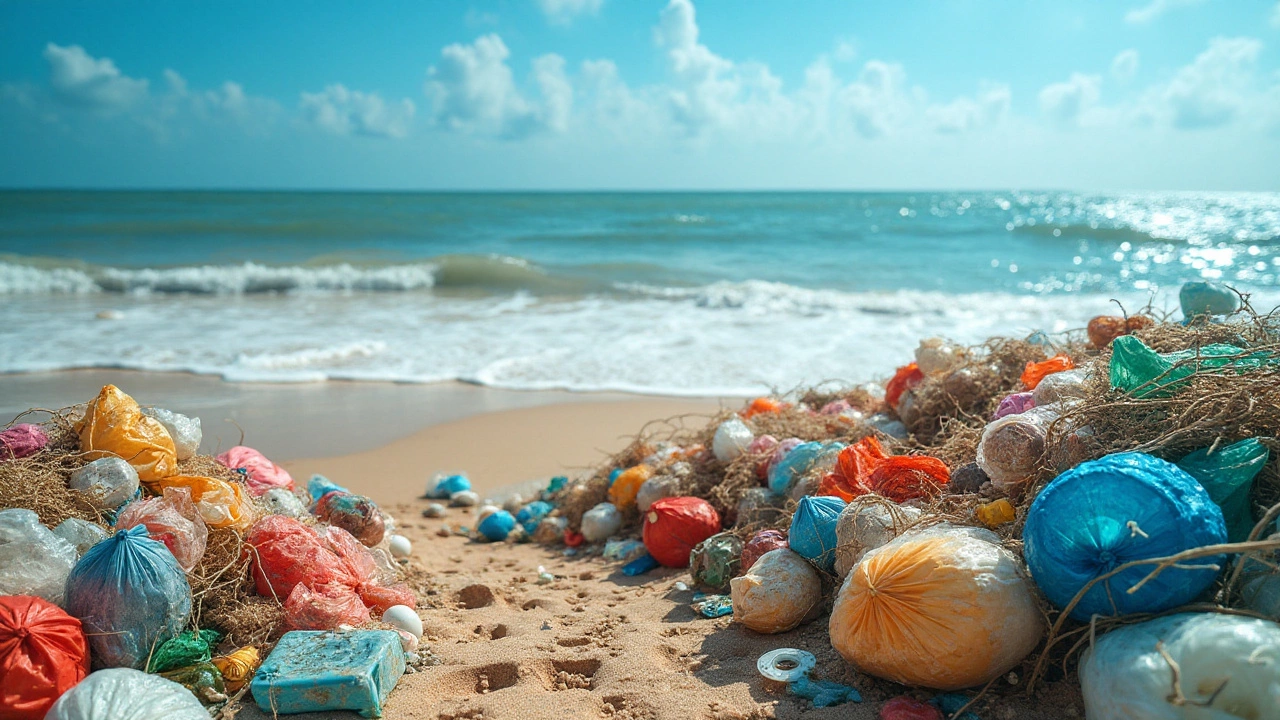
Top Plastic Waste Countries: Who Leads the Waste Crisis?
Discover which nation tops the plastic waste chart, why it happens, and what policies and personal actions can help cut the global plastic crisis.
When working with Marine Debris, human‑made solid waste that ends up in the ocean, from bottles and nets to micro‑particles. Also known as ocean litter, it fuels plastic pollution, harms marine wildlife, and strains waste management systems on land and sea.
Marine debris encompasses everything from abandoned fishing gear to single‑use packaging. The sheer volume creates a feedback loop: more debris leads to higher plastic pollution, which breaks down into microplastics. Those tiny particles are then ingested by fish, turtles, and seabirds, damaging health and disrupting food chains. In turn, affected marine wildlife draws attention from policymakers, prompting stricter waste management rules and funding for cleanup technologies. This chain of cause and effect shows that tackling marine debris requires actions on land, at sea, and in the lab.
First, improving waste management reduces the amount of trash that leaks into waterways. Cities that invest in better collection, sorting, and recycling cut the flow of plastic into rivers by up to 30 %. Second, targeting the biggest contributors—single‑use plastics and fishing gear—lowers the overall load of plastic pollution. Bans on lightweight bags, incentives for reusable containers, and extended producer responsibility programs all help. Third, emerging cleanup technologies like autonomous surface skimmers and river‑capture barriers retrieve debris before it reaches the open ocean. Finally, public awareness campaigns that highlight the plight of marine wildlife turn viewers into volunteers and voters supporting stricter regulations.
These approaches are not isolated; they form a network of interlocking solutions. Better waste management enables cleaner rivers, which supports cleanup technologies by reducing the volume they must process. Cleaner seas protect marine wildlife, which drives policy change and further investment in waste infrastructure. By understanding how each piece fits, you can see the bigger picture and choose where to focus your effort—whether you’re a student, entrepreneur, or policymaker. Below you’ll find a curated selection of articles that dive deeper into product ideas, industry rankings, and real‑world case studies that all intersect with the challenge of marine debris.

Discover which nation tops the plastic waste chart, why it happens, and what policies and personal actions can help cut the global plastic crisis.

Plastic pollution is a growing concern for our oceans. This article delves into the types of plastics that most affect marine ecosystems, revealing the environmental impact of these materials. Understanding which plastics are the biggest culprits can help in crafting better policies and practices to curb this pollution. The role of plastic manufacturers is also examined, offering insights into how industries can mitigate their contributions to oceanic waste. Gain practical tips on reducing your own plastic footprint and supporting environmental sustainability.